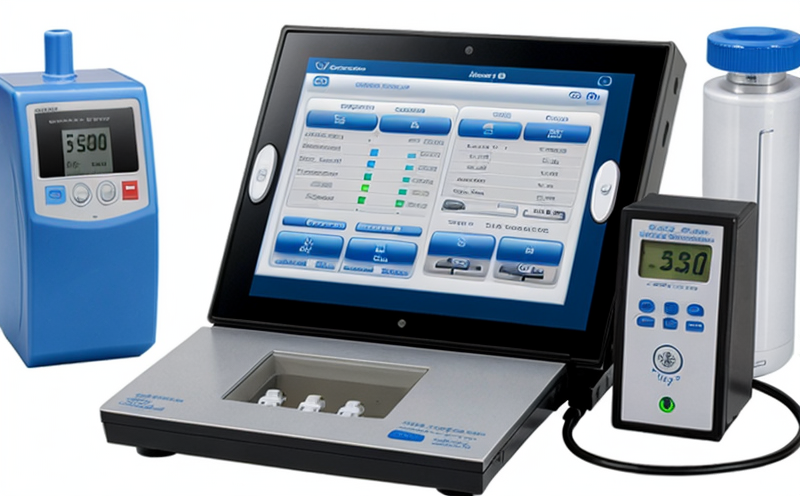ISO 11608-3 Needle-Based Injector Needle Strength Testing
The ISO 11608-3 standard is a crucial regulatory requirement for medical device manufacturers, particularly those involved in the design and development of needle-based injectors. This service focuses on ensuring that needles used in these devices meet stringent strength criteria to guarantee patient safety. The testing process aims to validate whether the needles can withstand the forces applied during use without compromising their integrity or causing harm.
The process begins with an understanding of the specific requirements outlined in ISO 11608-3, which includes not only mechanical stress but also considerations for materials and design. Compliance officers must ensure that all aspects of manufacturing align with these standards to avoid potential recalls and legal issues. Quality managers play a vital role by overseeing the testing process and ensuring that every step adheres strictly to ISO guidelines.
For R&D engineers, this service is particularly valuable as it allows them to simulate real-world conditions under which needles will be used. By performing this test early in the development cycle, they can make informed decisions about material selection and design modifications to enhance safety without compromising functionality. Procurement teams benefit from knowing that suppliers adhere to these stringent standards, ensuring consistent quality across production batches.
The testing procedure involves subjecting individual needles to controlled mechanical forces until failure occurs, closely monitoring each point of stress application. This allows for precise measurement of the breaking load and the mode of fracture, which are critical pieces of information when assessing needle performance.
Materials used in these injectors must possess specific properties such as strength, flexibility, and resistance to corrosion. Engineers often choose stainless steel or nickel-titanium alloys due to their favorable mechanical characteristics; however, other materials may also be considered depending on the application. Proper material selection ensures that needles not only meet but exceed regulatory requirements while maintaining optimal performance.
During specimen preparation, great care must be taken to ensure that samples are representative of actual usage conditions. This includes using appropriate gauge sizes and lengths specified by ISO 11608-3, ensuring uniformity among all specimens being tested.
Scope and Methodology
| Test Parameter | Description | Procedure |
|---|---|---|
| Specimen Preparation | Uniform needles of specified gauge sizes and lengths. | Ensure consistency in sample preparation to reflect real-world usage conditions. |
| Test Setup | Appropriate mechanical testing machine calibrated according to ISO 11608-3 specifications. | Position the needle specimen between jaws of the testing machine, ensuring accurate alignment and zero gap. |
| Loading Rate | Controlled loading rate within specified limits as per ISO standards. | Apply force at a constant speed to mimic real-world application pressures. |
| Data Collection | Continuous monitoring of applied load and displacement during testing. | Capture all relevant data points throughout the test duration, including peak loads achieved prior to failure. |
| Failure Criteria | Determination of needle failure based on defined fracture modes. | Identify whether failures occur due to tensile, shear, or other modes, providing insights into potential design weaknesses. |
The testing process is rigorous and meticulous, requiring adherence to strict ISO 11608-3 guidelines throughout. Compliance officers oversee each phase of the test to ensure accuracy and reproducibility. Engineers analyze the collected data to identify any areas where improvements could be made in future iterations.
By leveraging this service, manufacturers can demonstrate their commitment to producing safe and effective medical devices that comply with international standards. This not only enhances brand reputation but also ensures regulatory compliance, thereby protecting public health interests globally.
Benefits
Compliance with ISO 11608-3 is essential for any manufacturer seeking to produce safe and reliable medical devices. This service offers several significant benefits:
- Enhanced Patient Safety: Ensures that needles used in injectors are strong enough to perform their intended function without causing harm.
- Regulatory Compliance: Demonstrates adherence to international standards, facilitating smoother interactions with regulatory bodies.
- Improved Product Quality: Identifies potential weaknesses early on, allowing for necessary adjustments before full-scale production begins.
- Informed Design Decisions: Provides valuable data that informs ongoing research and development efforts aimed at improving product performance.
- Patient Confidence: Builds trust with healthcare professionals and patients alike by showcasing commitment to high-quality standards.
- Competitive Advantage: Differentiates products within the market, positioning them as leaders in quality and safety.
In summary, this service is instrumental in ensuring that medical devices meet rigorous international standards, thereby enhancing patient care worldwide. It serves as a cornerstone for maintaining high ethical standards throughout the industry.
International Acceptance and Recognition
The ISO 11608-3 standard has gained widespread acceptance across various countries around the world, making it an indispensable requirement for medical device manufacturers operating internationally. Many regions have adopted this standard as part of their national regulations governing the design, manufacture, and sale of medical devices.
In Europe, compliance with ISO 11608-3 is a prerequisite for obtaining CE Marking, which allows products to be legally sold in the European Economic Area (EEA). Similarly, in North America, adherence to these standards is often required by regulatory bodies like the U.S. Food and Drug Administration (FDA) and Health Canada.
Other regions such as Asia-Pacific also recognize the importance of ISO 11608-3, with some countries mandating its implementation for certain types of medical devices. This global consensus underscores the significance of this service in ensuring consistent quality across diverse markets.
By aligning their practices with these internationally recognized standards, manufacturers can expand their reach beyond domestic borders, opening up new opportunities for growth and innovation.





